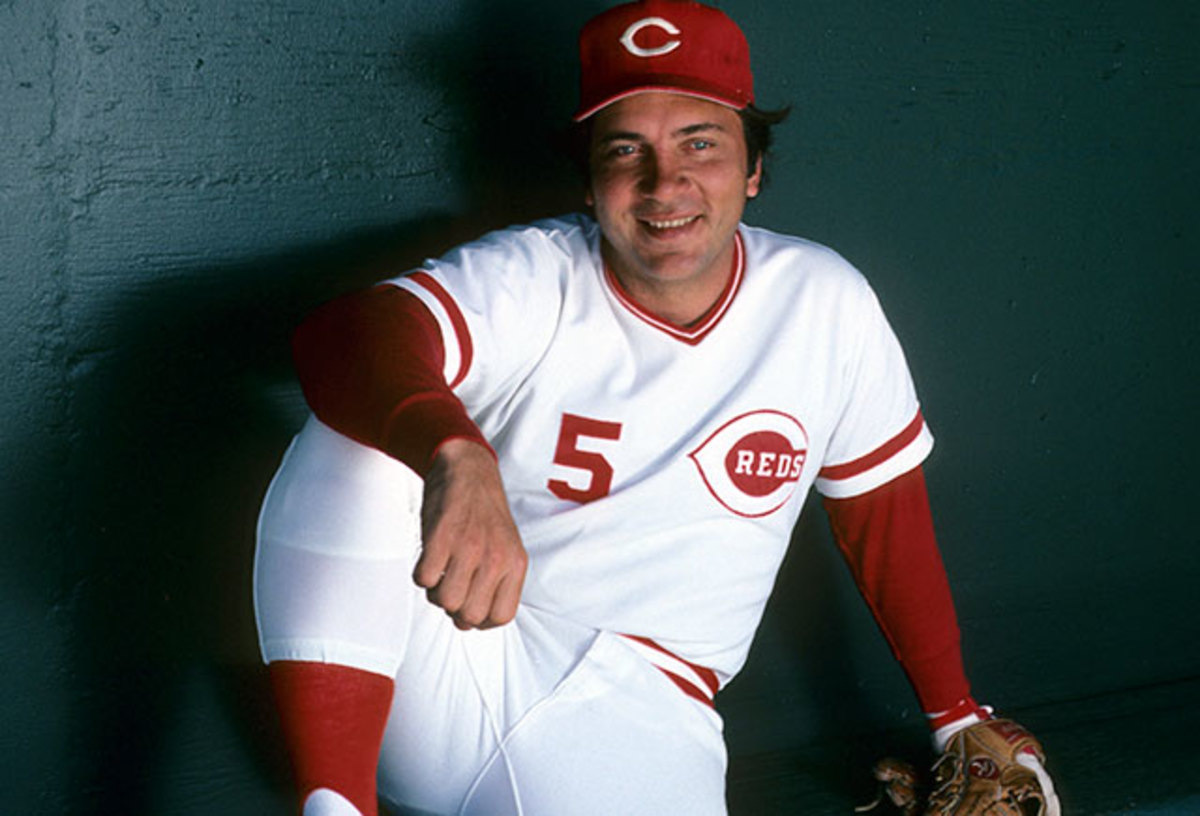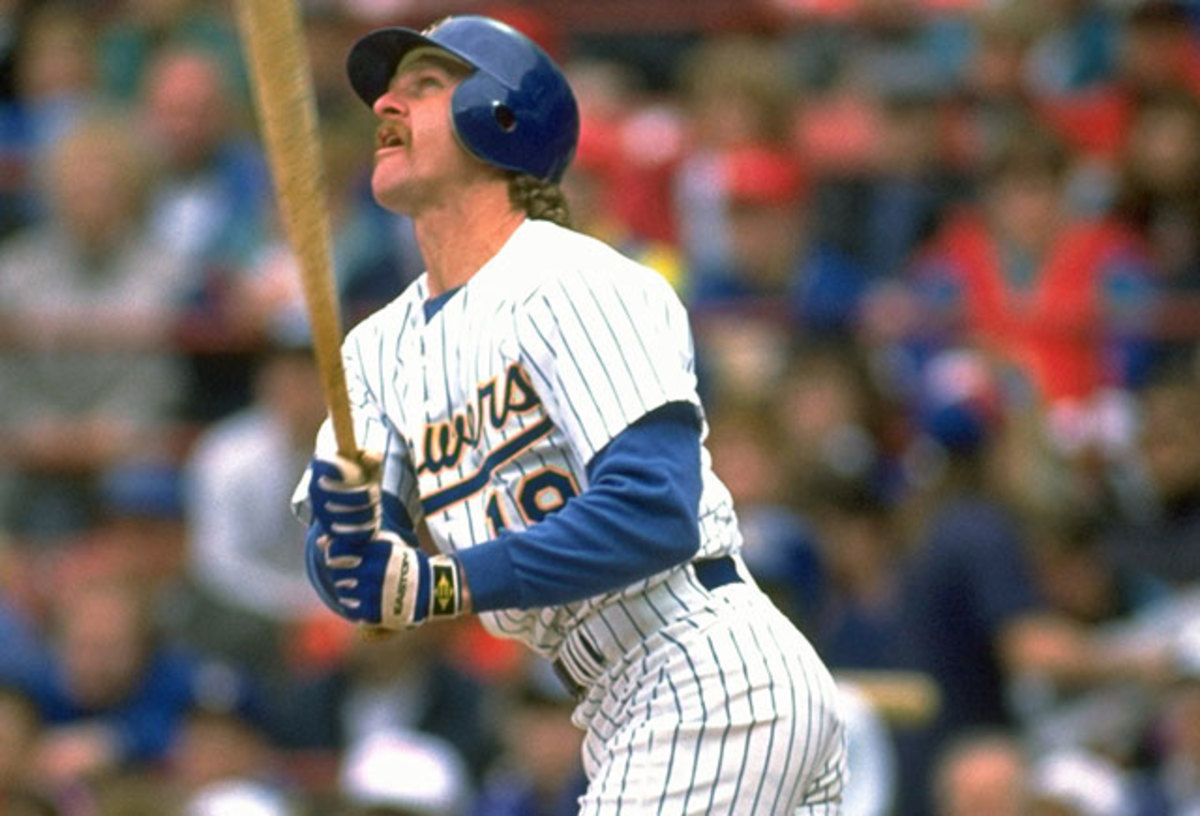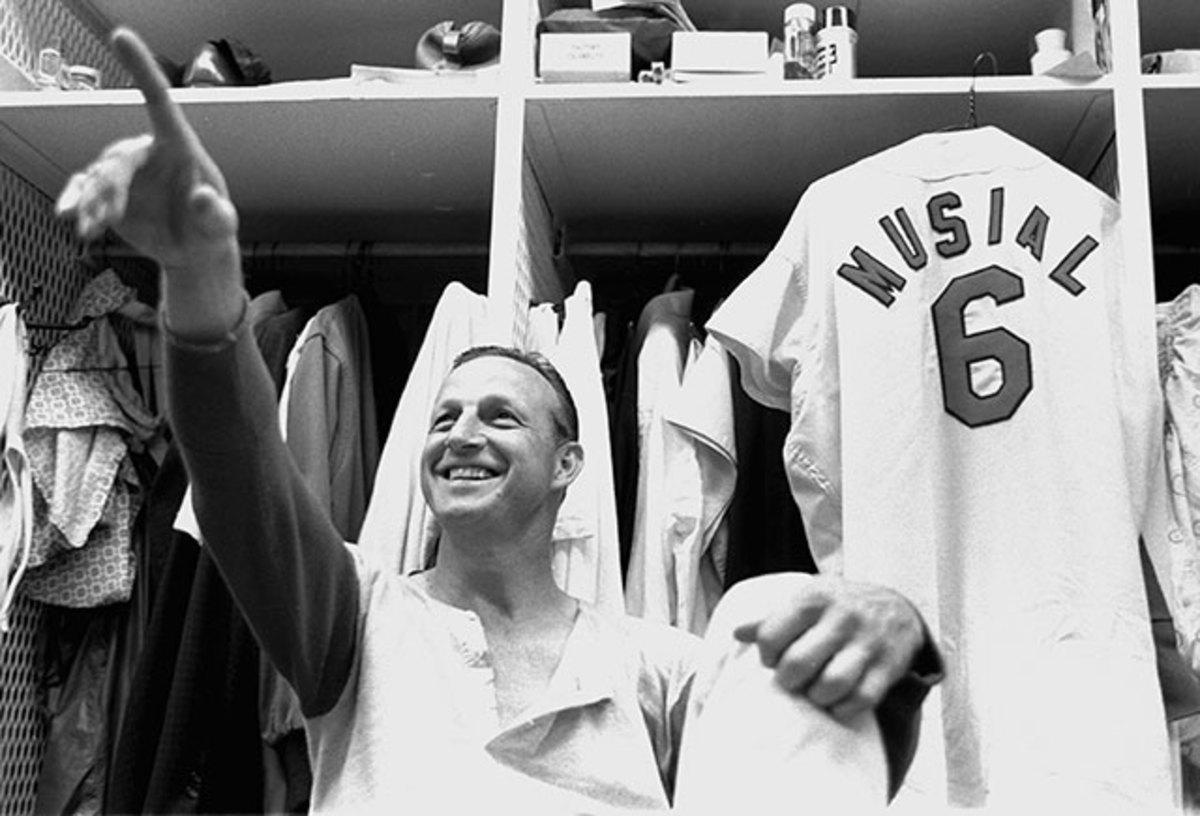Picking best Hall of Fame position player/pitcher pair for each NL team

On Sunday, Mike Piazza will join Ken Griffey Jr. in being inducted into the National Baseball Hall of Fame in Cooperstown. It’s an overdue honor for a 12-time All-Star who stands as the best-hitting catcher in the game’s history—a career .308/.377/.545 hitter whose 396 home runs are a record for the position.
Griffey was drafted by and forever closely identified with the Mariners even though he spent the second half of his career elsewhere, but Piazza is now more closely identified with his transplanted team, the Mets. Sure, he beat the odds by becoming the lowest draft pick—a 62nd rounder in 1988, chosen as a favor to his father, a friend of Dodgers manager Tommy Lasorda—ever to pan out, but he was dealt away from Los Angeles in a battle over salary in 1998. Where he never advanced further than the Division Series with the Dodgers, he helped the Mets reach the NLCS in his first year in New York and the World Series the following season. He’ll be the first position player to wear a Mets cap on his bronze plaque.
As I did with the American League, what follows here is a consideration of each NL team's greatest enshrined position player and pitcher—not necessarily drafted and developed by the team, and not necessarily wearing their cap on their plaques, but ideally having spent crucial parts of their careers with them, though in a few cases, I've had to stretch. For this exercise, I'm guided by WAR and JAWS (which you can read about here) but not limited to them; milestones, postseason play and historical importance are also factors. The teams are listed alphabetically.
Arizona Diamondbacks
Position Player: Roberto Alomar, 2B (2004)
Pitcher: Randy Johnson (1999–2004, ‘07–08)
The Big Unit signed with the Diamondbacks as a free agent following their 1998 inaugural season and did nothing less than win four straight NL Cy Young awards and lead the league in WAR in his first four seasons in the desert. He also helped the team to its first three postseason appearances, including its 2001 World Series win, during which he notched three wins and shared MVP honors.
Meanwhile, only one Hall of Fame position player has ever worn whatever garish garb the team was sporting at the time: Alomar, who played just 38 games for the Diamondbacks in the final season of his career. Paul Goldschmidt, with 27.2 WAR in parts of six seasons, is a ways off from even matching the peak standard among enshrined first basemen (42.5).
Atlanta Braves
Position Player: Hank Aaron, RF (1954–74)
Pitcher: Warren Spahn (1942, ‘46–64)
Aaron made 20 All-Star teams, won an MVP and a championship, and hit 733 of his 755 career homers as a Brave; he’s not just the greatest player in franchise history, he’s also one of the greatest, period. On the pitching side, the choice is surprisingly competitive. From among the 14 enshrined pitchers who served for the team in Boston, Milwaukee or Atlanta, Spahn holds a narrow lead over Phil Niekro in WAR (92.0 to 90.0) and a big one in wins (356 to 268), even if his number of Cy Young awards (one, from when it was shared by both leagues) and pennants (three) is variously outdone by the Tom Glavine/Greg Maddux/John Smoltz trio from the 1990s.
• What are the Hall of Fame chances for baseball's 35-and-over stars?
Chicago Cubs
Position Player: Ernie Banks, SS (1953–71)
Pitcher: Mordecai "Three-Finger" Brown (1904–16)
With 512 homers and a smile that served as the only lights that Wrigley Field needed for 19 years, Banks—"Mr. Cub"—is the clear choice here, even if Cap Anson (a key figure in drawing the game's color line), Ron Santo and Ryne Sandberg outrank him in WAR. With five 40-homer seasons, Banks redefined the shape of offense that was possible from a shortstop and served as one of the game's greatest ambassadors long after his playing days were done.
As for the pitchers: Fergie Jenkins has the edge in WAR, but Brown gets the nod for serving as the ace of four pennant winners and two champions during the Cubs' 1906–10 run as the NL's powerhouse. He posted a 1.42 ERA across that stretch, including a 1.04 mark in 1906, still the lowest in the 20th or 21st century. Oh, and he did it with a right hand that, thanks to a pair of childhood accidents, had just a stump for an index finger, a permanently bent middle finger and a paralyzed pinkie—all of which combined to give his pitches unholy movement.

Position Player: Johnny Bench, C (1967–83)
Pitcher: Eppa Rixey (1921–33)
Thanks to his combination of outstanding offense (389 homers and a 126 career OPS+) and defense, Bench made 14 All-Star teams, won two MVP awards, helped the Big Red Machine to four pennants and two championships and ranks No. 1 among catchers in WAR (75.0) and JAWS (62.1). Even with four other enshrined position players—Barry Larkin, Frank Robinson, Joe Morgan and Bid McPhee—having totaled at least 50 WAR for the team, he's an obvious call.
The more obscure choice is at pitcher, where I'm bypassing Tom Seaver (who pitched just six seasons in Cincinnati) in favor of Rixey, who compiled 179 of his 266 wins and 40.1 of his 56.8 career WAR as a Red. He's a lower-tier Hall of Famer, ranked 51st in JAWS among the 62 enshrined starters, but for a stretch from 1921 to '25, the only NL pitcher who surpassed his 25.8 WAR was teammate Dolf Luque.
• Estimating Hall of Fame chances for 12 of baseball's best under-35 players
Colorado Rockies
Position Player: None
Pitcher: None
No Hall of Famer has ever worn the Rockies’ purple, and things will likely remain that way until Larry Walker (10th among rightfielders in JAWS, with 48.2 WAR for the team) and/or Todd Helton (14th among first basemen in JAWS, with 61.2 career WAR) get their due. Both took advantage of hitter-friendly Coors Field to win batting titles (three for Walker, one for Helton) and posted eye-opening numbers whose value holds up well even after park adjustment. The venue is a high-altitude hell for hurlers, however, and nobody who's ever thrown a pitch for Colorado has made even a semi-serious bid for Cooperstown. The next wave of expansion could come to MLB before this slot is filled.
Los Angeles Dodgers
Position Player: Jackie Robinson (1947–56)
Pitcher: Sandy Koufax (1955–66)
Robinson boldly crashed through the game's longstanding color barrier in 1947 and sparked the Dodgers to six pennants in 10 seasons, including their only championship in Brooklyn in '55. In that 10-season span, only Stan Musial and Ted Williams outdid his 61.5 WAR, and nobody outdid his courage. Koufax, meanwhile, took a while to harness his control, but from 1962 to '66, he put together one of the most dominant runs in pitching history. He lead the NL in ERA five straight times, threw four no-hitters, won three Cy Young awards, helped the Dodgers to three championships and set a single-season strikeout record (382 in 1965) before walking away at age 30 due to arthritis in his left elbow.
• Verducci: David Ortiz on why his decision to retire is absolutely final
Miami Marlins
Position Player: Andre Dawson, RF (1995–96)
Pitcher: None
Miguel Cabrera is on track for a plaque, but until he gets there, the nod goes to Dawson, who spent the final two years of his 21-year career in Florida, hitting the last 10 of his 438 career homers and the last 74 of his 2,774 career hits. Hey, it beat choosing Piazza for the surreal week he spent in teal before being flipped to the Mets.
On the pitching side, no Hall of Famer has ever worn the Marlins' colors. Miami fans have to hope that Kevin Brown (33 wins and 15.0 WAR in 1996–97 alone, 211 wins and 68.3 WAR overall) gets reconsidered by the Expansion Era Committee or that 23-year-old Jose Fernandez (33 wins and 11.8 WAR from 2013 to '16) can stay healthy and productive for the next 15 to 20 years.

Position Player: Robin Yount, SS (1974–93)
Pitcher: Rollie Fingers (1981–82, '84–85)
Yount debuted in the majors at age 18 and stuck around long enough to collect 3,142 hits, winning MVP awards as both a shortstop (1982, leading the Brewers to their lone pennant) and centerfielder ('89). Fingers spent just four seasons as a Brewer, but he helped them to their first two postseason appearances in franchise history in 1981 (when he won both the Cy Young and MVP awards) and '82. Alas, he missed the postseason due to an elbow injury that would shelve him for the entire 1983 season, but that hardware certainly helped become just the second reliever ever elected to the Hall of Fame.
• The 30: Shining the spotlight on four underrated players in rankings
New York Mets
Position Player: Mike Piazza (1998–2005)
Pitcher: Tom Seaver (1967–76, '83)
This one’s easy. Piazza's credentials were noted above. As for Seaver: During his first stint in the Big Apple, "Tom Terrific" won three Cy Young awards, led the league in strikeouts five times and in ERA three times and served as the ace of the Mets as they won their first championship in 1969 and an NL pennant in '73.
Philadelphia Phillies
Position Player: Mike Schmidt, 3B (1972–89)
Pitcher: Steve Carlton (1972–86)
This duo led the Phillies to six postseason appearances, two pennants and a championship in the 1976–83 span. Schmidt, an elite two-way player, topped the NL in homers seven times, tallied 548 career dingers and led the league in WAR four times with seven other top-three finishes en route to the hot corner’s No. 1 ranking in career WAR, peak WAR and JAWS (106.5/58.5/82.5). Carlton rode his signature slider to four Cy Young awards and three league leads in WAR with the Phillies, racking up 3,031 of his 4,136 strikeouts and 241 of his 329 wins.
Pittsburgh Pirates
Position Player: Honus Wagner, SS (1900–17)
Pitcher: Vic Willis (1906–09)
One can certainly make a case here for the iconic Roberto Clemente, who led the Pirates to two championships, blazed a trail for Latin American players and collected exactly 3,000 hits before dying in a plane crash while delivering humanitarian aid to earthquake victims in Nicaragua. Even so, Wagner was the NL's dominant player around the turn of the 20th century, winning eight batting titles and leading the league in WAR 11 times from 1900 to '12. He was one of the five members of the first Hall of Fame class in 1936, and he ranks No. 1 at the position in WAR and JAWS.
The competition among the enshrined pitchers connected to the team is a less impressive one among 10 players who more or less made their names elsewhere. Willis gets the nod as the lone Buc to lead the NL in WAR, which he did in 1906. In his four years in Pittsburgh, he won 89 games, pitched to a 2.08 ERA and helped the team to a championship in 1909.

Position Player: Stan Musial, RF (1941–44, '46–63)
Pitcher: Bob Gibson (1959–75)
A seven-time batting champion who collected 3,630 hits (fourth all-time), 475 homers and 128.1 WAR (eighth all-time), "Stan the Man" is as closely identified with the Cardinals as any player is with any team. The 20-time All-Star—who split his time between first base and the three outfield spots—led the league in WAR four times, won three MVP awards and three World Series with the Redbirds. The intimidating Gibson became just the second pitcher in history to reach 3,000 strikeouts, finishing with 3,117 in a career that also included 251 wins, two Cy Young awards and an MVP award. He was also the most dominant postseason pitcher of his day, going 7–2 with a 1.89 ERA in nine starts totaling 81 innings (and eight complete games) in St. Louis' 1964 and '67 World Series wins and its '68 loss.
San Diego Padres
Position Player: Tony Gwynn (1982–2001)
Pitcher: Gaylord Perry (1978–79)
A Padre for his entire career, Gwynn made 15 All-Star teams, won eight batting titles and rapped out 3,141 hits, serving as the link between the franchise's pennant-winning squads in 1984 and '98. At the other end of the spectrum, the itinerant, spit-balling Perry spent just two seasons in San Diego, but in the first of them, he went 21–6 with a 2.73 ERA and became the oldest Cy Young winner (39 years old) and the first to win the award in both leagues.
San Francisco Giants
Position Player: Willie Mays (1951–52, '54–72)
Pitcher: Christy Mathewson (1900–16)
Arguably the greatest all-around player in baseball history, Mays tallied 646 of his 660 homers and 3,187 of his 3,283 hits for the Giants in New York and San Francisco. He won two MVP awards and led the league in homers four times and in WAR 10 times; he topped 10.0 six times, as many as Barry Bonds and Mickey Mantle put together. The gentlemanly Mathewson was one of the game's first superstars and the ace of four pennant-winning Giants teams. During his run with New York, he led the league in ERA, strikeouts and WAR five times apiece. He was one of the original five members of the Hall of Fame, though sadly, he died 11 years before being elected.
Washington Nationals/Montreal Expos
Position Player: Gary Carter (1974–84, '92)
Pitcher: Pedro Martinez (1994–97)
Since no Nationals have actually been inducted, we have to reach back to the storied heyday of the franchise in Montreal for both of these picks, which I'm assuming suits fellow SI.com baseball writer Jonah Keri just fine. Carter succeeded Bench as the NL's top catcher, making seven All-Star teams, winning three Gold Gloves, hitting 220 of his 324 career homers and helping the Expos to their lone playoff appearance in 1981 before leaving Montreal as a free agent. Martinez, stolen from the Dodgers in exchange for a slumping Delino DeShields, put himself on the map during his four-year run with the Expos, capped by a Cy Young-winning season in which he whiffed 305 hitters and led the league in ERA (1.90), WAR (9.0) and Jheri Curl.
